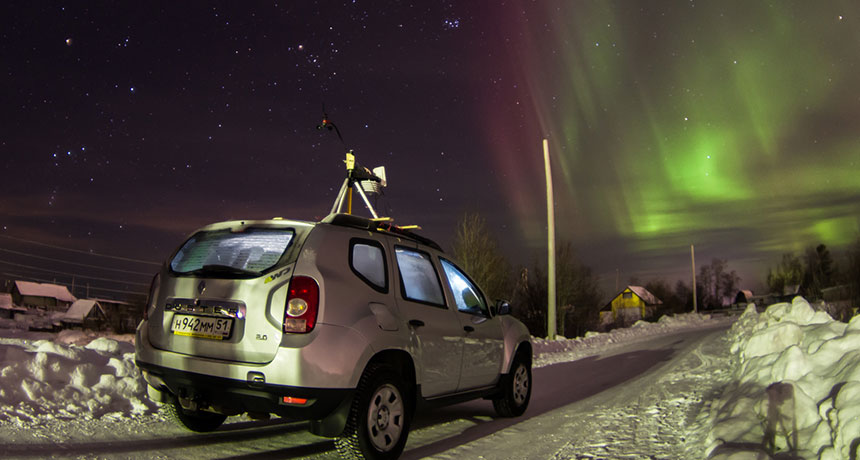Urban heat islands exist even in the Arctic
Sunless winter doesn’t prevent warming in cities

NORTHERN NIGHTS Researchers ferry weather system sensors to Apatity, a Russian Arctic city. The team’s data show that during the polar night, indoor heating can bleed into the environment, warming it by as much as 10 degrees Celsius relative to nearby rural sites.
M. Varentsov/Lomonosov Moscow State Univ.